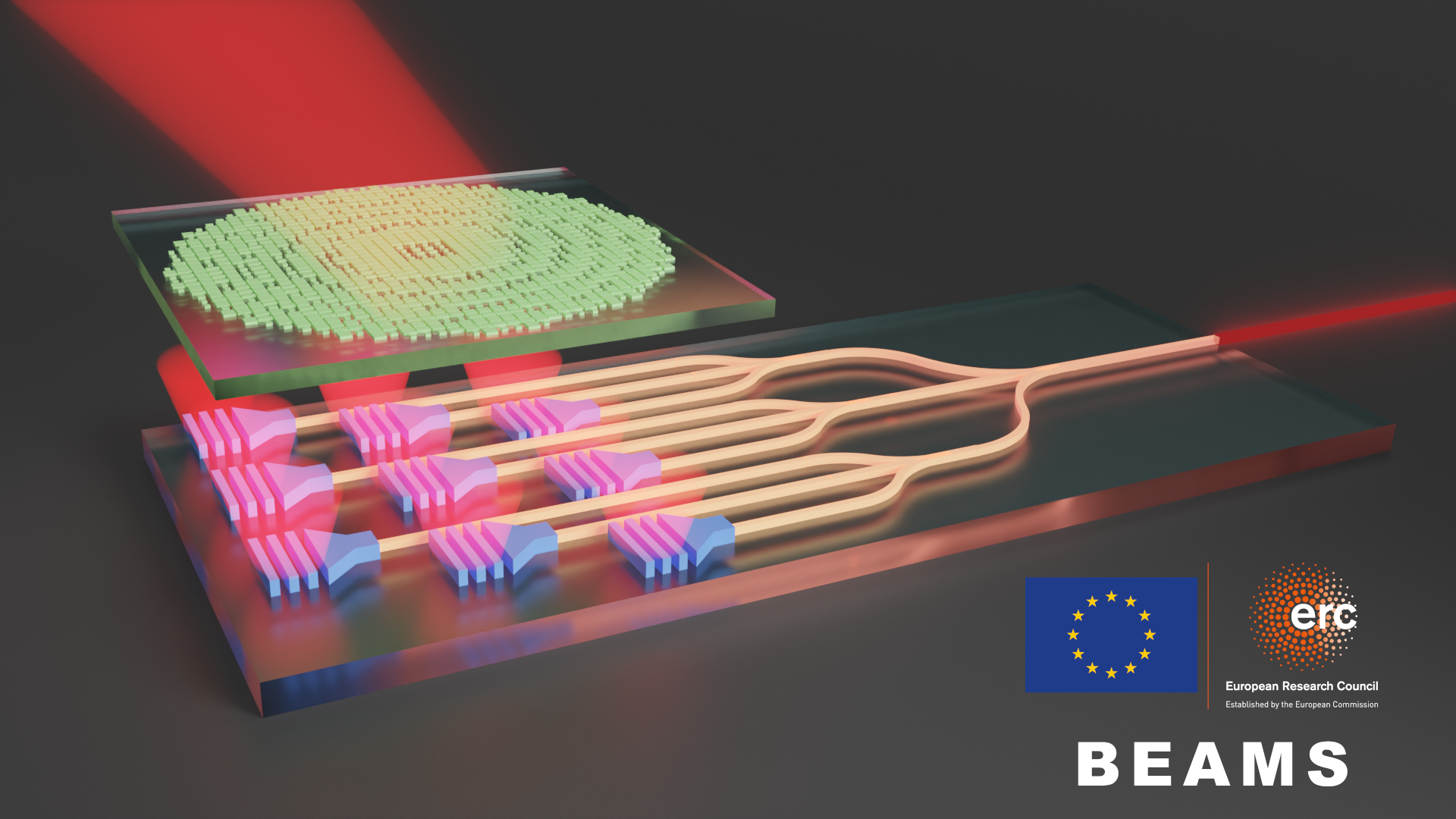
The project explores a new class of silicon photonic devices and circuits in a three-dimensional integration technology for the generation, control, and reception of free-space laser beams. This research is motivated by the surging importance of communication, sensing, and imaging applications exploiting optical beams propagating in the free space and their urgent need for compact and flexible devices. Currently available integrated solutions based on planar integration technologies are fundamentally limited by either narrow operational bandwidth and reduced shaping capabilities or small apertures and limited steering ranges.
The original idea of the BEAMS project is to overcome these limitations by developing multi-layer antenna arrays, metasurfaces, and photonic control circuits exploiting an approach based on three-dimensional integration. This multi-pronged concept will enable unmatched performance in aperture size, efficiency, bandwidth, control flexibility, and power which cannot be achieved by currently available scientific and technological solutions, enabling the development of integrated photonic devices for long-range and broadband free-space applications. Exploiting these new capabilities, the project will demonstrate in particular innovative photonic devices for optical communications, targeting a kilometer-long communication link in free space with multiple wavelength channels. Through its research program, the BEAMS project will combine the fields of integrated and free-space photonics, opening a plethora of new possibilities with a large impact on science and society.
The team
Daniele Melati (PI) : Daniele Melati is a researcher at the Center for Nanoscience and Nanotechnology, France, and an Adjunct Professor at Carleton University, Canada. He obtained his PhD at Politecnico di Milano and he spent three years at the National Research Council Canada as Research Associate. His research focuses on the use of optimization and machine learning tools for the development of complex photonic devices, with recent applications to optical metalaterials and metasurfaces, photonic antennas, and optical phased arrays. He has co-authored more than 150 journal and conference publications and he received a European Research Council (ERC) starting grant in 2022 on the development of integrated devices for free-space optical communications.
Jian Cao (PhD student)
Sarra Salhi (PhD student)
Publications
[3] P. Manfredi, A. Waqas, and D. Melati, ‘Stochastic and multi-objective design of photonic devices with machine learning’, Sci Rep, vol. 14, no. 1, p. 7162, Mar. 2024, doi: 10.1038/s41598-024-57315-4.
[2] P. Cheben, J. H. Schmid, R. Halir, J. M. Luque-González, J. G. Wangüemert-Pérez, D. Melati, and C. Alonso-Ramos, ‘Recent advances in metamaterial integrated photonics’, Adv. Opt. Photon., vol. 15, no. 4, pp. 1033–1105, Dec. 2023, doi: 10.1364/AOP.495828.
[1] Y. Liu, Y. Liu, J. Zhang, X. L. Roux, E. Cassan, D. Marris-Morini, L. Vivien, C. Alonso-Ramos, and D. Melati, ‘Broadband behavior of quadratic metalenses with a wide field of view’, Opt. Express, vol. 30, no. 22, pp. 39860–39867, Oct. 2022, doi: 10.1364/OE.466321